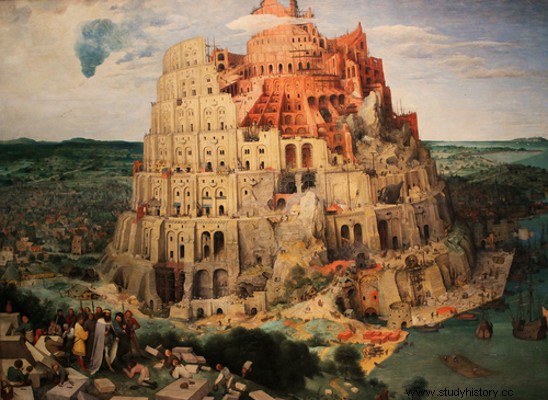
By Me. Cláudio Fernandes
When you study the transition from the Middle Ages, specifically the Low Middle Ages, to the Modern Age, you can see that it still exists in many history textbooks, magazines and blogs of education a certain reductionist perspective that understands the Cultural Renaissance of the 14th, 15th and 16th centuries as a phenomenon of radical and definitive rupture with the Middle Ages. This view assumes that the Middle Ages were a decadent and obscure period that offered nothing significant to the cultural universe that came with the Renaissance.
But on the contrary, in the period understood as the Renaissance, several elements of the Christian culture that flourished in the Middle Ages converged, as elements of the classical culture (Greco-Latin), which came to have a largest in Western Europe, especially in regions with intense maritime trade, such as Italy (to the south) and Holland and the Netherlands (to the north), which also had intense urban development in the medieval period.
For historian Thomas Woods, the Renaissance, more than a complete break with the medieval past, can be considered the height of the Middle Ages. He says that “the medievals, like one of the exponential figures of the Renaissance, had a deep respect for the heritage of classical antiquity, even if they did not accept it as uncritically as some humanists did:and it is in the Middle Ages that we find the origins of of the artistic techniques that would be perfected in the following period.” (WOODS, Thomas. How the Catholic Church Built Western Civilization. São Paulo:Quadrante, 2008. p. 119)
The confluence between classical and Christian culture was expressed in the work of various Renaissance authors, from artists such as Michelangelo and Leonardo da Vinci to writers such as Erasmus of Rotterdan, Nicholas of Cusa and Thomas More. A characteristic that became, indeed, a Renaissance identity in the scope of intellectual studies was the rediscovery of the original classical texts, especially the Greek ones. Philosophers such as Aristotle and Plato were read in the Middle Ages through Latin translations with little accuracy. Scholars of the Renaissance, such as Leonardo Bruni – translator of Aristotle's Politics and Ethics to Nicomache – were responsible for rescuing the primary sources of Greek texts and for making judicious and commented translations.
In addition, other characteristics also contributed to compose an identity of its own to the Renaissance. The anthropocentric conception of the world, which was gradually imposed, diverged from the medieval theocentric perspective, although several doctrinal elements have been preserved. Humanism, that is, the appreciation of human potential, the rational faculty, the capacity for artistic creation, observation, recording and calculation of natural phenomena and political organization, also contributed to define this period that preceded the 17th century - century of Scientific Revolution operated by Galileo Galilei. The great navigations and the discovery of the “new world” (the American continent) and of the civilizations and cultures that developed in it were also decisive in configuring the Renaissance as a time of new experiences and cultural enrichment. Added to this was the heliocentric theory of Nicolaus Copernicus, which also began to adjust to anthropocentrism and man's ability to discover the mysteries of the "harmony of the world", that is, the cosmological mysteries.
In addition, it was at the beginning of the 16th century, at the height of the Renaissance, that two decisive events took place in the intellectual, religious, moral and political spheres of Europe:the invention of the press, Joannes Gutenberg, and the Protestant Reformation, unleashed by Martin Luther. These two events combined, little by little, changed men's relationship with intellectual knowledge previously restricted to the domain of the Latin language. Martin Luther translated the Bible into German, while Gutenberg's invention facilitated the reproduction and reading of books (such as the Bible) by the lay public.
